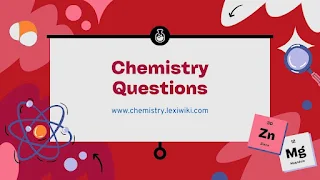Questions on States of Matter
Multiple Choice Questions – States of Matter
1. How many classical states of matter are commonly recognized in science?
A) 2
B) 3
C) 4
D) 5
E) 6
2. Which of the following is not one of the classical states of matter?
A) Solid
B) Plasma
C) Gas
D) Liquid
E) Vapor
3. In which state of matter are particles tightly packed and vibrating in place?
A) Liquid
B) Plasma
C) Gas
D) Solid
E) Bose-Einstein Condensate
4. What is the shape and volume of a gas?
A) Definite shape and definite volume
B) Definite shape, indefinite volume
C) Indefinite shape, definite volume
D) Indefinite shape and volume
E) Indefinite shape, fixed volume
5. Which state of matter has a definite volume but takes the shape of its container?
A) Solid
B) Gas
C) Liquid
D) Plasma
E) Vapor
6. Which of these best describes the movement of particles in a gas?
A) Fixed in place
B) Sliding past one another
C) Tightly bonded
D) Moving freely and rapidly
E) Barely moving at all
7. Which of the following states of matter is composed of ionized particles?
A) Gas
B) Plasma
C) Liquid
D) Solid
E) Colloid
8. What state of matter exists at very low temperatures near absolute zero?
A) Plasma
B) Gas
C) Bose-Einstein Condensate
D) Liquid
E) Supercritical Fluid
9. The change from solid to liquid is called:
A) Freezing
B) Sublimation
C) Melting
D) Condensation
E) Deposition
10. The change from gas to liquid is called:
A) Freezing
B) Melting
C) Evaporation
D) Condensation
E) Sublimation
11. The process of changing from liquid to gas at the surface is called:
A) Condensation
B) Boiling
C) Melting
D) Freezing
E) Evaporation
12. What happens to the particles in a substance as it heats up?
A) They stop moving
B) They become smaller
C) They lose energy
D) They move faster
E) They contract
13. Which state of matter fills the entire volume of its container?
A) Liquid
B) Solid
C) Plasma
D) Gas
E) Colloid
14. Which of these phase changes skips the liquid state?
A) Melting
B) Condensation
C) Sublimation
D) Freezing
E) Boiling
15. Which is a property of solids?
A) No fixed volume
B) Easily compressible
C) Particles in fixed positions
D) Particles widely spaced
E) No definite shape
16. Condensation occurs when:
A) Gas changes to liquid
B) Liquid changes to gas
C) Solid changes to gas
D) Liquid changes to solid
E) Solid changes to liquid
17. A plasma is most similar to which other state of matter?
A) Liquid
B) Solid
C) Gas
D) Colloid
E) Crystal
18. Which is not a physical change between states of matter?
A) Melting
B) Boiling
C) Burning
D) Condensation
E) Freezing
19. What happens during freezing?
A) Gas becomes a solid
B) Liquid becomes a gas
C) Liquid becomes a solid
D) Solid becomes a gas
E) Solid becomes a liquid
20. Deposition is the change from:
A) Gas to liquid
B) Liquid to gas
C) Solid to gas
D) Gas to solid
E) Solid to liquid
- Questions About Matter, Mass, and Volume
- Questions on Pure Substance
- Questions – Physical Properties - Extensive and Intensive
Answer Key with Explanations
1. C) 4
The classical states of matter are solid, liquid, gas, and plasma.
2. E) Vapor
Vapor is a gas phase of a substance, not a distinct state of matter.
3. D) Solid
In solids, particles are closely packed and vibrate in place.
4. D) Indefinite shape and volume
Gases have neither a definite shape nor volume—they expand to fill containers.
5. C) Liquid
Liquids have a definite volume but take the shape of their container.
6. D) Moving freely and rapidly
Gas particles are far apart and move very quickly in all directions.
7. B) Plasma
Plasma is made of ionized particles with high energy.
8. C) Bose-Einstein Condensate
This state occurs near absolute zero and has unique quantum properties.
9. C) Melting
Melting is the transition from solid to liquid.
10. D) Condensation
Gas turns into a liquid during condensation.
11. E) Evaporation
Evaporation happens at the surface of a liquid without boiling.
12. D) They move faster
Heating increases kinetic energy, so particles move faster.
13. D) Gas
A gas expands to fill the entire volume of its container.
14. C) Sublimation
Sublimation is a change directly from solid to gas.
15. C) Particles in fixed positions
Solids have particles arranged in fixed locations.
16. A) Gas changes to liquid
Condensation is the process of gas becoming a liquid.
17. C) Gas
Plasma behaves similarly to gases but with ionized particles.
18. C) Burning
Burning is a chemical change, not a phase change.
19. C) Liquid becomes a solid
Freezing changes a liquid into a solid.
20. D) Gas to solid
Deposition is the direct change from gas to solid (e.g., frost formation).
Dive into the groundbreaking science of neurotransmitters—your brain’s invisible architects—in Chemical Harmony: How Neurotransmitters Shape Our Lives (2025). This meticulously researched book reveals how serotonin, dopamine, GABA, and other brain chemicals silently orchestrate every aspect of your existence, from decision-making and relationships to mental health and emotional resilience.Click here to buy
Share Online!

